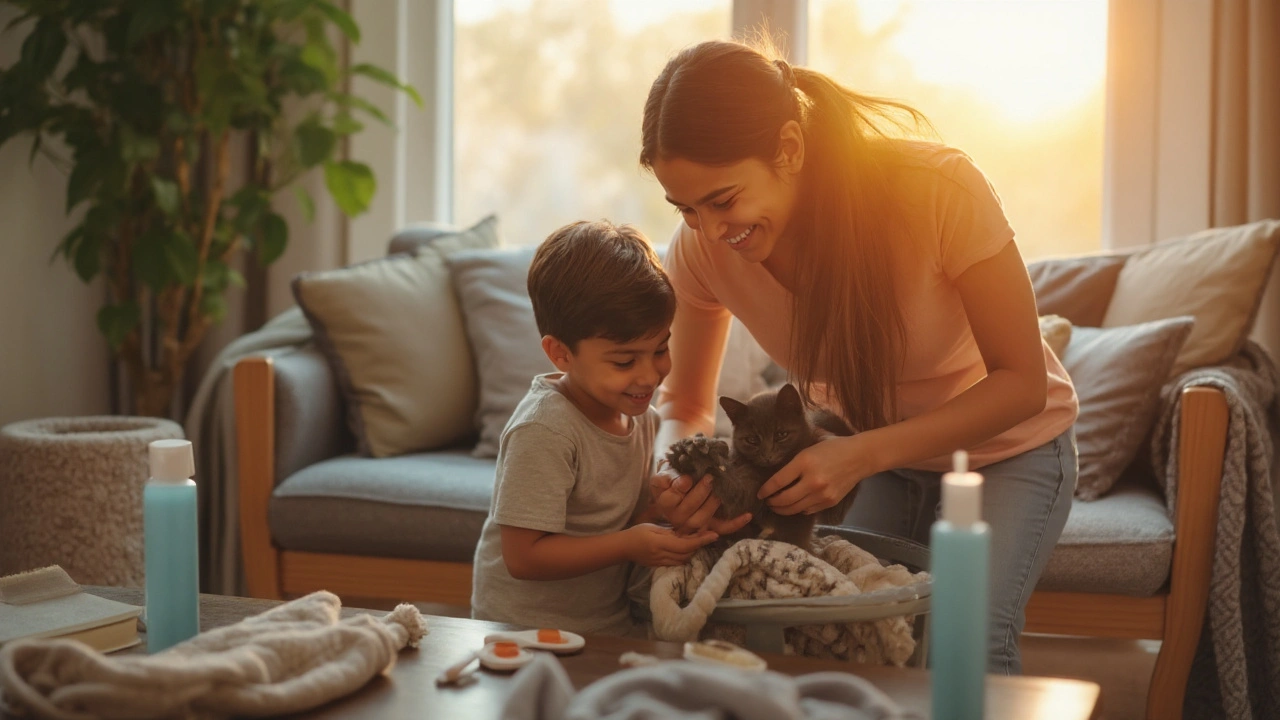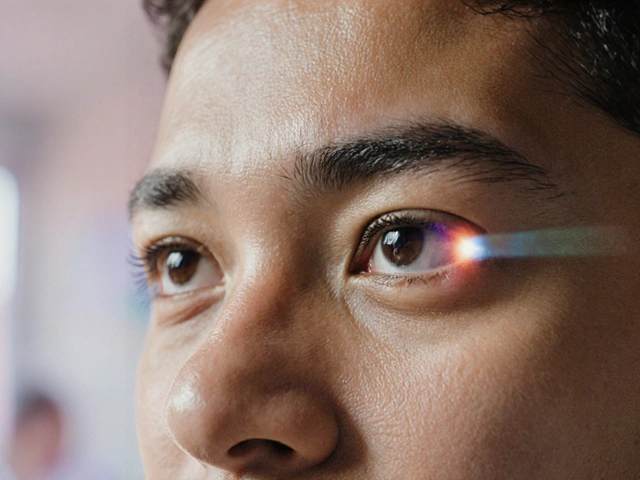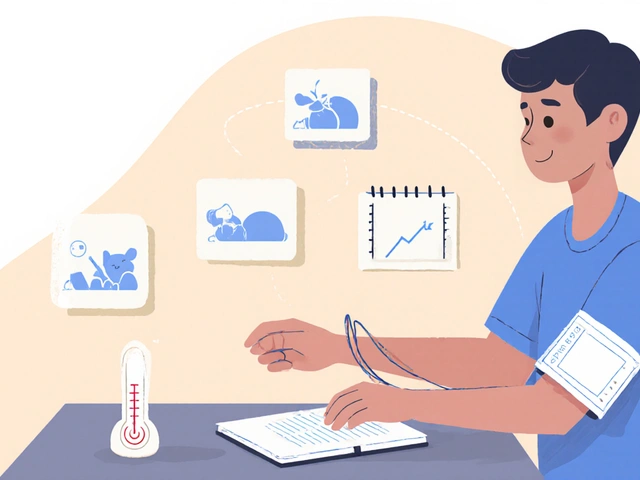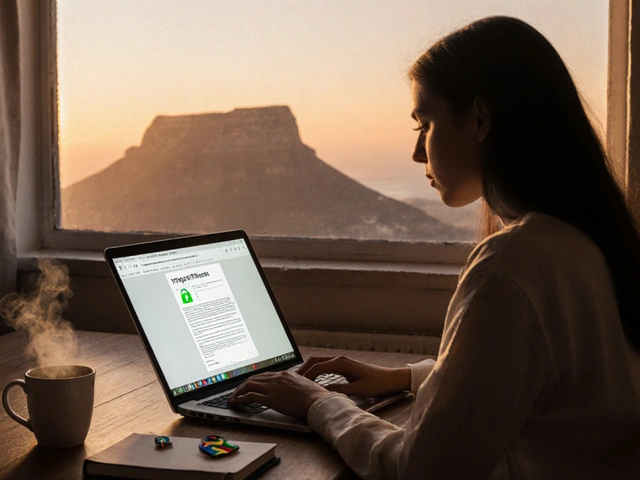You don’t have to roll around on a wrestling mat to catch ringworm. You can pick it up trying on shoes, borrowing a hoodie, or cuddling a new kitten. The point here isn’t to scare you—it’s to show you the sneaky spots this fungus hangs out and give you simple moves to avoid it without living like a germaphobe.
TL;DR / Key takeaways
- Ringworm is a contagious fungal infection, not a worm. It spreads by skin-to-skin contact, from pets, and from contaminated items and surfaces.
- Surprising hotspots: rental shoes and helmets, hair salons/barbers, gym mats and yoga gear, thrift shops, communal laundry, school/change rooms, petting zoos, hotel carpets, and garden soil.
- Spores can survive on surfaces for weeks to months. Clean with bleach (1:9) or hydrogen-peroxide–based disinfectants and let them sit for 10 minutes.
- Wash fabrics at 60°C or higher and heat-dry. Keep skin dry, use flip-flops in shared showers, don’t share brushes, hats, or towels.
- If you think you’re exposed, wash up and change clothes. Start an OTC antifungal early; see a clinician for scalp infections, widespread rash, or if no improvement in 1–2 weeks.
Where ringworm actually hides (and why those spots matter)
Ringworm (tinea) loves warm, damp, and shared spaces. It spreads through direct contact, from animals, and via items like towels and hats. The science word for how it spreads is ringworm transmission, and it’s sneakier than most people expect because the spores stick to hair, skin cells, and fabrics.
Here’s where people get blindsided:
- Gyms and studios: Yoga mats, foam rollers, shared boxing gloves, and weight benches are classic traps—especially if they’re only wiped quickly between users. Wrestlers and jiu-jitsu athletes know this risk, but casual gym-goers often miss it.
- Changing rooms and pools: The fungus behind athlete’s foot (a type of ringworm) thrives on damp floors. Step barefoot, then pull on socks and shoes, and it rides along.
- Hair salons and barbers: Clippers, combs, capes, neck brushes, and even chair headrests can carry spores, particularly if tools aren’t disinfected correctly between clients.
- Rental shoes and helmets: Bowling shoes, ice skates, school sports kits, hard hats, VR headsets, and rugby or cricket helmets passed around a team can pass along scalp and skin infections.
- Clothing shops and thrifting: Fitting-room curtains, shared stools, and unwashed secondhand clothes and hats can transfer spores. Same for costume rentals and theater wardrobes.
- Schools and daycares: Nap mats, soft toys, shared dress-up clothes, and classroom carpets. Kids share everything—also their skin cells.
- Team sports gear: Scrum caps, shin guards, shoulder pads, and taping benches. Sweat plus tight gear equals a perfect microclimate.
- Hotels and travel: Carpets, upholstery, and extra blankets that aren’t washed hot between stays; gym rooms in hotels; rental wetsuits and life vests.
- Pets and pet places: Kittens and puppies are common carriers (especially strays). Grooming tables, brushes, bedding, and vet waiting rooms may have spores if cleaning slips.
- Home sweet home: Shared towels, bath mats, couches, and car seats after a sweaty workout. Ringworm is happy to wait on your favourite throw blanket.
- Outdoors: Garden soil, compost, and beach sand can host dermatophytes, especially in warm, humid coastal climates. If you’re barefoot a lot, your risk goes up.
Climate matters. Warm, humid cities like Durban make it easier for fungi to survive on surfaces and skin. Add close-contact sports, busy gyms, or a new rescue kitten, and you’ve got the right ingredients.
How it spreads, how long it survives, and what actually kills it
Ringworm fungi (dermatophytes) feed on keratin—skin, hair, and nails. That means anything that collects shed skin cells can carry spores: fabric, foam, wood, bristles, and vinyl. Transmission happens through:
- Direct skin-to-skin contact
- Pet hair and dander (cats and dogs, but also rabbits and guinea pigs)
- Fomites—objects and surfaces like hats, clippers, mats, brushes, carpets
Survival time: research and public-health guidance report that spores can live on surfaces for weeks to several months, especially in cool, shaded, and humid conditions. That’s why you can pick it up even when the person who left it behind is long gone.
What kills it: ordinary quick wipes aren’t enough. Use a proper disinfectant and give it time to work. On skin, use antifungal creams or tablets depending on the site.
| Place or item | Typical survival window | Best practice to clean | Contact time |
|---|---|---|---|
| Hard non-porous surfaces (benches, tiles) | Weeks | Bleach 1:9 (1 part bleach, 9 parts water) or 0.5–1% hydrogen peroxide product | 10 minutes wet |
| Porous/soft surfaces (mats, pads, carpets) | Weeks to months | Detergent clean + disinfectant spray rated for fungi; steam-clean carpets if possible | 10 minutes wet |
| Fabrics (towels, clothing, bedding) | Days to weeks | Wash at ≥60°C with detergent; tumble dry hot | Full wash/dry cycle |
| Hair tools (combs, brushes, clippers) | Weeks | Remove hair; soak in hospital-grade disinfectant per label; clipper spray between clients | As per product (usually 10 min) |
| Pet items (bedding, brushes) | Weeks | Hot wash bedding; clean and disinfect hard items; vacuum and discard bag/empty canister | 10 minutes wet on hard items |
Evidence sources: CDC guidance on ringworm (2024), American Academy of Dermatology treatment advice for tinea (2023), and UK health guidance for schools and sports mats (2024). These agencies align on the basics: spores hang around, cleaning needs real contact time, and starting treatment quickly reduces spread.
On the body, what works:
- Skin (tinea corporis/cruris/pedis): Over-the-counter terbinafine 1% cream or butenafine 1% usually beats clotrimazole faster. Use 1–2 times daily for 2–4 weeks, keep going 1 week after the rash clears.
- Scalp (tinea capitis): Needs prescription oral antifungals (griseofulvin or terbinafine) for 4–8 weeks. Shampoos (selenium sulfide or ketoconazole) help reduce shedding but don’t cure on their own.
- Nails (tinea unguium/onychomycosis): Usually needs oral treatment; see a clinician for options and liver-safety checks.
Contagiousness drops after you start effective therapy. AAD notes that after 48 hours of proper treatment, the chance of passing it on falls a lot—faster for skin infections than scalp or nail ones.

Simple moves to avoid catching it (checklists, rules of thumb, and mistakes to skip)
You don’t need a hazmat suit. You just need a few habits. Start with these rules of thumb:
- If it’s shared and absorbent (foam, fabric, bristles), clean it or cover it.
- Dry skin beats damp skin. Fungi hate dry, moving air.
- Don’t share anything that touches hair, skin folds, or feet.
- Hot wash + hot dry beats cold wash every time.
- Disinfectants only work if surfaces stay visibly wet for the full label time.
Quick checklists by situation:
Gym or studio
- Bring your own towel and a spray bottle of a peroxide-based gym cleaner if your gym’s wipes are weak.
- Wipe equipment before and after. On mats, clean a rectangle bigger than your body and let it sit wet for ~10 minutes if possible.
- Wear flip-flops in the shower and on locker-room floors.
- Change out of sweaty gear immediately; wash at 60°C and heat-dry.
Team sports (rugby, soccer, BJJ, wrestling)
- Don’t share scrum caps, shin guards, or gloves. If you must, disinfect the liner and let it dry fully.
- Coaches: clean mats daily with a fungicidal disinfectant; rotate spare gear so it fully dries between uses.
- Cover any active lesions with breathable dressings; exclude from full-contact drills until on treatment for 48 hours.
Haircut or braids
- Check that combs and scissors come from a disinfectant jar or sealed pouch. Clipper blades should be sprayed between clients.
- Ask for a fresh cape or a neck strip. Avoid shared hair brushes.
- Skip a cut if you see visible flakes on tools or hairy towels.
Shopping and thrifting
- Wear socks when trying on shoes; use disposable footies if provided.
- Wash or steam-thoroughly any secondhand clothes and hats before wearing.
- Wipe fitting-room benches before sitting if you’re wearing shorts.
Travel and hotels
- Pack a light sarong or sheet to lay over seating and blankets if you’re sensitive.
- Use shower shoes; hang damp items to dry with space around them.
- Skip the hotel gym mat—use a towel on top or bring a foldable travel mat.
Pets and pet places
- New kitten or puppy? If you see circular hair loss or scaling, get a vet exam. Keep them in an easy-to-clean area until cleared.
- Hot-wash pet bedding weekly during treatment; vacuum frequently and discard bags or clean the canister.
- Handle strays with long sleeves; wash up right after.
Home routine
- Separate towels for each person. Swap bath mats weekly (hot wash).
- Air out shoes; alternate pairs so each dries 24 hours between wears.
- De-clutter damp zones: hang loofahs to dry or ditch them (they trap skin and stay wet).
Things people get wrong
- “It’s a worm—deworming will fix it.” It’s a fungus. Different meds.
- “Hand sanitizer kills everything.” Most sanitizers aren’t designed for fungal spores.
- “It doesn’t itch, so it’s fine.” Ringworm can be subtle, especially on the scalp.
- “One quick wipe is enough.” Not unless the surface stays wet the full contact time.
Exposed or infected? Do this now (plus mini‑FAQ and next steps)
If you think you picked it up today:
- Wash the area with soap and water as soon as you can. Rinse sweat and skin debris—spores cling to both.
- Change into clean, dry clothes. Bag the worn items; hot wash when you get home.
- Apply an OTC antifungal cream to any suspicious spots (terbinafine or butenafine). Start twice daily.
- Clean likely contact surfaces (phone case, car seat, gym bag handles) with bleach 1:9 or a peroxide disinfectant—keep it wet for 10 minutes.
- Keep skin dry and cool. Avoid tight gear for a couple of days.
Signals it’s probably ringworm
- Round or ring-shaped rash with clearer skin in the middle
- Red, slightly raised border that may itch
- On the scalp: scaly patches, broken hairs, tender bumps, or a bald patch
- On feet: scaling between toes, itching, moccasin-like dry cracking on soles
When to see a clinician
- Scalp, beard, or nail involvement (needs oral meds)
- Rash on the face or groin that’s spreading fast
- No improvement after 1–2 weeks of correct OTC use
- Widespread rash, diabetes, immune suppression, or recurrent infections
- Multiple family members or teammates showing symptoms
How to clean your space if someone in the house has ringworm
- Laundry: Wash towels, bedding, sports gear, and pajamas at ≥60°C. Heat-dry.
- Floors and hard surfaces: Vacuum first (remove skin debris), then disinfect. Keep surfaces wet for 10 minutes.
- Soft stuff: Steam-clean carpets and couches if available. Sun-dry cushions on a bright day—UV helps.
- Personal items: Don’t share hair tools, hats, headphones, or razors. Clean brushes with hot soapy water, then disinfect.
- Pets: If one pet is positive, assume the environment is seeded. Hot-wash bedding twice a week until vet clearance.
Mini‑FAQ
- How long until I’m not contagious? For skin infections, contagiousness drops a lot within 48 hours of starting the right antifungal. Scalp infections need oral meds and can take longer; schools often allow return after treatment starts and covering lesions.
- Can I get it from soil or beach sand? Yes, dermatophytes can live in soil. Wear sandals, rinse feet, and dry well.
- Do UV or sunlight help? UV can reduce spores on surfaces and fabrics, but don’t rely on sun alone—combine with washing/disinfection.
- Is vinegar or tea tree oil enough? Not reliably. Use proven antifungals on skin and proven disinfectants on surfaces.
- Can I still work out? Yes, if lesions are covered and you’ve started treatment. Skip close-contact sports for 48 hours.
Next steps and troubleshooting by scenario
- Athlete with recurring patches: Rotate two pairs of shoes; use antifungal powder in footwear; wipe mats with a fungicidal cleaner; shower quickly after training and dry between toes with a hairdryer on cool.
- Parent of a child with scalp ringworm: Get a prescription oral antifungal. Use selenium sulfide or ketoconazole shampoo 2–3 times a week for the household for the first 2 weeks to reduce spore shedding. Hot-wash bedding and hats. Inform the school nurse/teacher.
- Pet owner with a flaky kitten: Vet visit for diagnosis (Wood’s lamp or culture). Follow treatment plus environmental cleanup (vacuum, hot-wash, bleach on hard floors). Limit the kitten to one room until two negative tests if advised.
- Coach managing a team outbreak: Daily mat disinfection with contact time; exclude athletes with untreated lesions; return to play after 48 hours of therapy for skin infections; assign personal gear; schedule gear-drying time between sessions.
- Frequent traveler: Pack shower shoes and a thin travel sheet; bring a small disinfectant spray for soles and handles; hit laundry within 24 hours of return.
Credible sources behind these tips: Centers for Disease Control and Prevention (2024) on ringworm basics and prevention; American Academy of Dermatology (2023) on treatment choices and contagiousness; UK Health Security Agency (2024) on school and sports guidance; peer-reviewed dermatology reviews on environmental survival and disinfection. The numbers on wash temps, disinfectant strengths, and contact times align across those references.
Last word: you don’t need to avoid gyms, barbers, or beaches. Just control the small things—dry skin, hot wash, proper disinfection, and don’t share the close-contact stuff. Do that, and ringworm won’t catch you by surprise.







Those rental shoes and thrift hats are way more dangerous than people think.
I always bring disposable footies for trying shoes and a tiny peroxide spray for hat linings.
Air shoes for 48 hours between wears and you stop a lot of transfer.
Hot washing bedding after a sweaty gym day is underrated and quick.
When a kid comes home with a scaly patch treat the environment as much as the skin.
Pet carriers, grooming tables, and vet waiting-room carpets matter too.
Drying between toes with a hairdryer on cool is a small hack that works.
Spores cling to hair and bristles so hair brushes are mini incubators.
Start terbinafine at the first suspicious spot and you often cut transmission fast.
Scalp infections need a prescriber but reducing household shedding helps everyone.
Bleach 1:9 for hard floors and peroxide for mats is practical.
Let the disinfectant stay wet for the full contact time or it’s pointless.
Daycare dress-up clothes are a classic vector so simple policies save hassle later.
Be practical not paranoid: no sharing, hot wash, cover lesions, and routine beats crisis every time.
Gyms and studios need to step up and provide proper disinfectants and visible instructions on contact time.
Peroxide wipes are a sensible minimum and having a spray bottle available makes people actually clean properly.
Coaches should rotate spare gear so it dries fully between sessions.
Simple signage and a bin for used towels reduce risky sharing without policing every person.
Noted practical tips
I never realized soil and sand could hold spores
Will start airing shoes more
Right on, simple steps make a big difference 👍
Bringing flip-flops and a travel mat is low effort and saves a lot of fuss 😅
Good checklist, gonna start airing my shoes.
This reads like a hazmat manual for sneakers.
Most people live normal lives and basic hygiene handles 99 percent of this without turning every backpack into a biohazard bin.
Bleach on everything is overkill and corrosive, and most gyms already have reasonable cleaning routines.
Focusing on extreme surface contact times for casual users is the kind of advice that makes people tune out.
There is a big difference between reasonable caution and trusting every label and cleaning routine blindly.
Facilities often cut corners and use cheap wipes that look like disinfectant but provide no real fungal kill, and that gap is why outbreaks linger.
When a place relies on the honor system for towel bins or reuses costumes without hot washing, the environment becomes seeded and people keep getting reinfected.
Trust needs evidence: visible cleaning logs, proper products with stated contact times, and routine hot washes for textiles during an outbreak.
Pets picked up from shelters or street rescues commonly carry infections and the household can be contaminated before anyone shows symptoms.
Professional grooming or vet clinics that dodge proper disinfection are responsible for recurring household cases more often than most will admit.
It’s not paranoia to ask for receipts, cleaning labels, and proof of protocol during an outbreak; it’s sensible risk management.
Practical summary for anyone scanning the thread
First, treat anything shared and absorbent like a tiny risk reservoir and either avoid it or disinfect/cover it.
Second, hot wash and heat-dry textiles, rotate shoes, and let damp gear fully air between uses.
Third, start a proven topical antifungal at the first sign for body infections and see a clinician for scalp or nail issues.
Fourth, when someone in the household is infected, vacuum, disinfect hard floors, steam or sun carpets, and hot-wash bedding weekly until cleared.
Finally, for travel pack flip-flops and a thin travel sheet, skip trying on shoes without footies, and use a towel on gym mats.
Follow these steps, and you can keep living your life without turning every outing into a health drama.